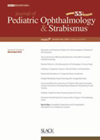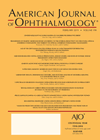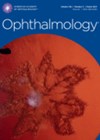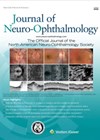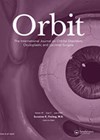You searched for "blink"
Greater accuracy of cycloplegic refraction
The authors conducted this study on 5320 pre-school (four to six-year-old) and 6475 school (seven to ten years) children to compare the results of final glasses prescription based on cycloplegic refraction with atropine to those of non-cycloplegic refraction. For younger...IOL effect on refraction
The authors aimed to evaluate the effect of age at primary intraocular lens (IOL) implantation on the rate of refractive growth during childhood. This was a retrospective study of 296 eyes of 219 patients. Forty-six met inclusion criteria; 28 unilateral...ROP screening criteria
This study aimed to describe a process of identifying birth weight and gestational age screening guidelines in Mongolia using telemedicine for retinopathy of prematurity (ROP) screening. This was a single centre prospective study collecting data from December 2016 to January...Efficacy of cyclo 1% spray
The aim of this study was to evaluate the efficacy and tolerability of cyclopentolate 1% spray in patients aged three to six years. This was a cross section parallel group study of 61 children. Thirty-one received cyclo 1% drops and...Risk of CNV related to angioid streaks in PXE
7 April 2021
| Tasmin Berman
|
EYE - Vitreo-Retinal
This retrospective cross-sectional study investigated 301 patients with pseudoxanthoma elasticum (PXE) for prevalence of choroidal neovascularisation (CNV) and macular atrophy. Some patients were excluded due to missing or poor-quality imaging or the fact that they didn’t have angioid streaks, leaving...
Characteristics of Charles Bonnet syndrome in patients with neovascular AMD
7 April 2021
| Ed Rule
|
EYE - Vitreo-Retinal
|
Age-related macular degeneration, Charles Bonnet syndrome, Low vision, Negative outcome, Visual hallucinations
This retrospective cross-sectional study aimed to characterise various aspects of Charles Bonnet syndrome hallucinations among patients with neovascular age-related macular degeneration (AMD). Five hundred and ten consecutive patients were asked a screening question to determine if they had ever suffered...
Caffeine concentration in the vitreous after drinking coffee
7 April 2021
| Ed Rule
|
EYE - Vitreo-Retinal
Caffeine is known to penetrate many bodily fluids, including the vitreous. In this prospective study, investigators measured caffeine levels in vitreous samples from patients undergoing vitrectomy and epiretinal membrane peel. Patients were divided into habitual and non-habitual coffee drinkers. One...
Effect of blue-light filtering intraocular lenses on age-related macular degeneration
7 April 2021
| Anna Song
|
EYE - Vitreo-Retinal
This is a retrospective cohort study evaluating whether blue-light filtering (BLF) intraocular lenses (IOL) offer prophylaxis for neovascular age-related macular degeneration (nAMD). The study included 11,397 eyes of 11,397 patients with a mean age of 75.4 ±8.3 years that underwent...
Cataract extraction and microperimetry
3 June 2021
| Ed Rule
|
EYE - Cataract, EYE - Refractive
|
Cataract, Cataract surgery, Microperimetry, Retinal sensitivity
In this study, the authors assessed retinal sensitivity before and after cataract extraction, in an effort to understand how lens opacities may affect microperimetry results in glaucoma and macular diseases. Thirty patients awaiting cataract extraction were examined and their lens...
Can the angle of origin of the ophthalmic artery predict embolic trajectory?
3 June 2021
| Lauren R Hepworth
|
EYE - Neuro-ophthalmology
A retrospective, comparative case-control study was used to test the hypothesis that a risk factor for retinal versus cerebral infarct is the angular origin of the ophthalmic artery from the internal carotid artery. The study compared one group (n=28) who...
Thalamic infarcts and the associated neuro-ophthalmic sequelae
3 June 2021
| Lauren R Hepworth
|
EYE - Neuro-ophthalmology
The authors present a retrospective review of clinical and imaging data from a stroke database over a 10-year period. Of those identified as having a thalamic infarction (n=342), 40 were found to have neuro-ophthalmic sequelae (11.7%). The neuro-ophthalmic sequelae reported...

